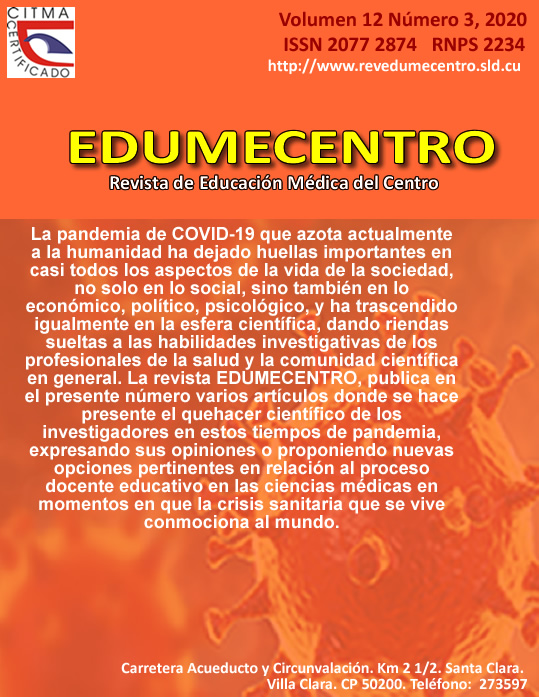Digital social networks applied to teaching and medical care
Keywords:
computer communication networks, medical informatics applications, students, medical, educationAbstract
Introduction: higher education involves students influenced by digital social networks whose power to share, create and communicate becomes an essential element in their lives, so it demands from teachers to incorporate new ways of teaching.
Objective: to describe the possibility of using social networks in teaching and health care.
Methods: a review of bibliographic sources in SciELO, Google Academic and Infomed was carried out from 2015 to 2019, based on the key words: digital social networks, learning, students, web tools. Twenty-four documents were chosen for their relevance to the study.
Results: through the review it was found that social networks have been a revolution on the Internet, so it has been adopted by some health professionals as a means to manage knowledge, disseminate information and strengthen care and teaching. The subtopics reviewed are related to some theoretical precisions about them, their use in medical education and the link established by patients with the same interests or diseases; and opinions about the scientific reliability of its information related to health, are shared.
Conclusions: social networks can be used in medical teaching and care, always with the guidance of health professionals who guarantee the scientific reliability of the information to be shared.
Downloads
Published
How to Cite
Issue
Section
License
Los autores que publican en esta revista están de acuerdo con los siguientes términos:- Los autores/as conservarán sus derechos de autor y ceden a la revista el derecho de primera publicación de su obra, el cuál estará simultáneamente sujeto a una Licencia Creative Commons Reconocimiento-NoComercial-CompartirIgual 4.0 Internacional (CC BY-NC-SA 4.0) que permite a terceros compartir la obra siempre que se indique su autor y su primera publicación esta revista.
- Los autores pueden establecer por separado acuerdos adicionales para la distribución no exclusiva de la versión de la obra publicada en la revista (por ejemplo, situarlo en un repositorio institucional o publicarlo en un libro), con un reconocimiento de su publicación inicial en esta revista.
- Se permite y se anima a los autores a difundir sus trabajos electrónicamente (por ejemplo, en repositorios institucionales o en su propio sitio web) antes y durante el proceso de envío, ya que puede dar lugar a intercambios productivos, así como a una citación más temprana y mayor de los trabajos publicados (Véase The Effect of Open Access) (en inglés).










